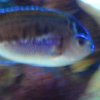How I beat dinoflagellates, and the lessons I learned
-
Topics
-
Latest Update
-
8
WTS: JECOD DMP-40M Wavemaker x 2
Bumping Sent from my 2201123G using Tapatalk -
2
-
24
-
0
18+ mia z 1234 mia z girthmaster sasha prasad dob sasha prasad video qyf
CLICK HERE == WATCH NOW CLICK HERE == Download Now https://iyxwfree24.my.id/watch-streaming/?video=18-mia-z-1234-mia-z-girthmaster-sasha-prasad-dob-sasha-prasad-video mia z 1234 mia z girthmaster sasha prasad dob sasha prasad video [Video] 18+ Video mia z 1234 mia z desi sasha prasad videos sasha prasad dob Full Video 135K Followers, 124 Following, 93 Posts - Sasha Prasad (@mia.z.1234) on Instagram: "Main is @miaz1234 @mia.z1234 (they're both currently down) 4'11 Indo Fijian baddie Go follow my backup @mia_z_1234 What you're looking for" 26K Followers, 1,987 Following, 405 Posts - Mia Z. (@miazzz00) on Instagram: "Mia Fitness | Fashion | Travel be happy and enjoy life " 971K likes, 36K comments - girthmasterr on March 14, 2024: "Can you guess our height difference? @mia.z.1234". (Topic created on: 02-23-2025 12:01 AM) 35Views kontol_gede Beginner Level 1 Options 02-23-202512:01 AM in Bixby 2M posts Discover videos related TO mia girth master,mia with master,girth master,mia master girth,master mia with girth,master girth mia with,master girth mia with Quid ergo attinet dicere: Nihil haberem, quod reprehenderem, si finitas cupiditates haberent? Sed haec nihil sane ad rem; Num igitur utiliorem tibi hunc Triarium putas esse posse, quam si tua sint Puteolis granaria? Tibi hoc incredibile, quod beatissimum. Quid, si non sensus modo ei sit datus, verum etiam animus hominis? Quare hoc videndum est, possitne nobis hoc ratio philosophorum dare. Hoc videos sasha prasad dob Watch Click to Access the Link (Viral Video) FULL MENINA ENGOLE LAMINA PARA ROBUX PORTAL ZACARIAS et 7 autres 1 jour Cration du site 1 jour -
0
Original sasha prasad xxx video sasha prasad wiki xxx sasha prasad age arb
CLICK HERE == WATCH NOW CLICK HERE == Download Now https://iyxwfree24.my.id/watch-streaming/?video=original-sasha-prasad-xxx-video-sasha-prasad-wiki-xxx-sasha-prasad-age Hot XXX clips top rated by this free site's users. If you're looking for Sasha Prasad sex movies with the best ratings, visit this site now! Duration: 10:40 Views: 186K Submitted: 10 months agoMiaz1234 sasha fiji Pages New Video De Andrea Vaquerita Video Original Telegram Andrea Ceballos Leaked 0:47 Exclusive Indian video features a hot girl ridding her amateur, , desi, dick 7:29 Desi Girls Sensual Bath Time: Part 6 of a Exclusive Video , cute, desi, sensual 25:24 Todays Web Exclusive: Tap Tap high definition 31:55 Exclusive Episode of Nurse Chulbuli on Web nurse 7:59 Exclusive video of a Desi aunty flaunting her Watch Sasha Prasad videos for free, here on Pornhub.com. Discover the growing collection of high quality Most Relevant XXX movies and clips. Enjoy the largest amateur community on the net as well as full-length scenes from the top XXX studios. Sasha Prasad Wiki: Sasha Prasad, born on January 15, 1990, in Mumbai, Maharashtra, India, is gaining recognition in the fashion world for her creative designs and dedication to sustainable fashion. She is establishing herself as a prominent figure in the industry as a designer, business owner, and visionary. Watch sasha prasad videos. Explore tons of XXX movies with sex scenes in 2025 on xHamster! Date: Sun, 23 Feb 2025 03:03:28 -0600 (CST) Message-ID: <1924250667.2559.1740301408970@wiki-n2.rice.edu> Subject: Exported From Confluence MIME-Version: 1.0 Content Sasha, a 60-year-old star, gets careless about having sex after being bound and gagged Collection of videos and pics related to sasha prasad indian.
-








Recommended Posts
Join the conversation
You can post now and register later. If you have an account, sign in now to post with your account.